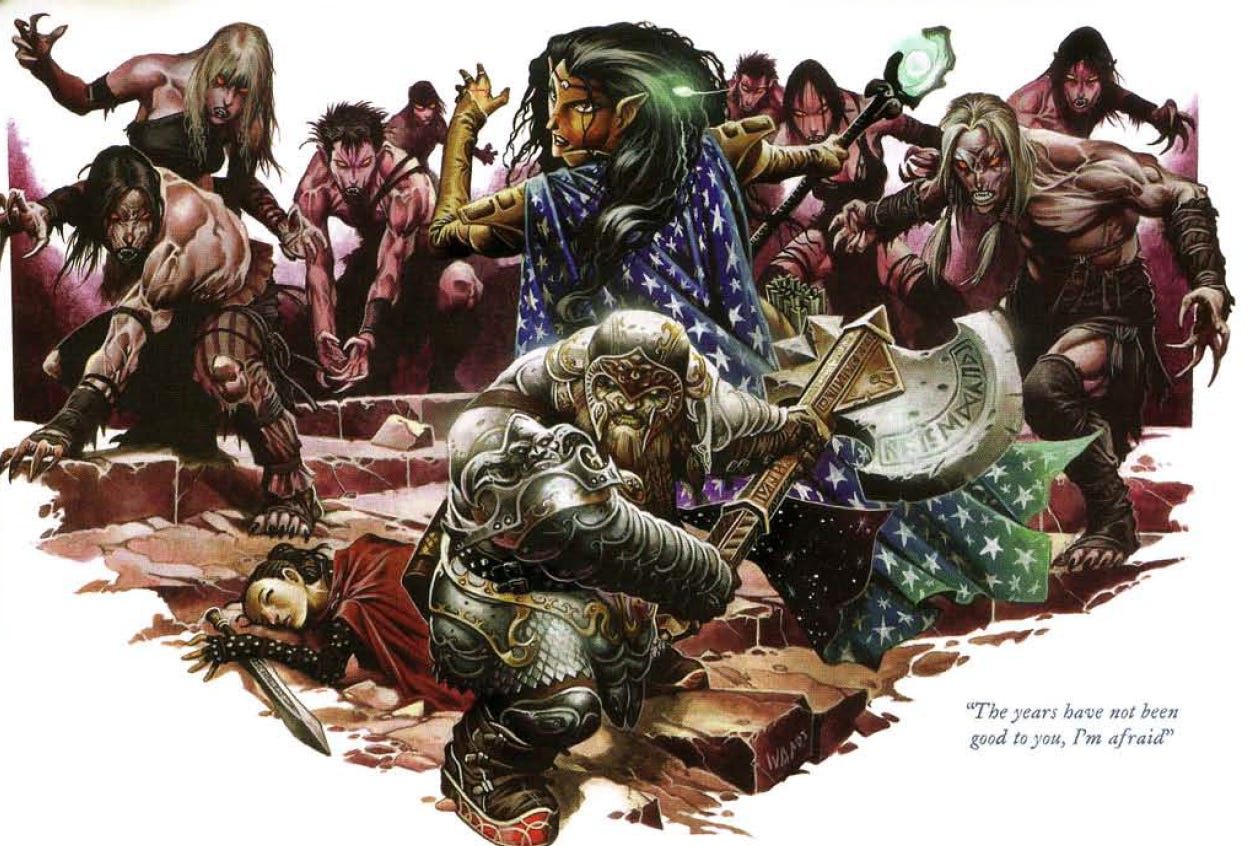
Elves and Paralysis an Ongoing Question
In the Dungeons & Dragons role playing game, every edition I can think of, Ghouls have the ability to paralyze their foes. Given how fatal an extended period of paralysis can be for a Dungeons & Dragons, this is an extraordinarily dangerous special ability. This danger is perfectly illustrated by Jeff Dee’s continuation of his iconic Ghoul Attack cover for T1 The Village of Hommlet adventure for Advanced Dungeons & Dragons. Here we see two Fighters, one Human and one Halfling, attacked by Ghouls. In the end, only the Halfling survives, weary and worn. It’s such a dangerous ability that I recently wrote a post about what the long term effects of having paralysis be permanent would be on a campaign.
The party would have done much better in the battle if they had an Elf, especially a Basic/Expert D&D Elf, as a member. This is because ever since the second edition of Chainmail, Elves have been immune to the special attacks of Ghouls. I had always assumed, based on playing 2nd Edition AD&D where Elves experience “reverie” instead of sleeping, that this was due to some factor dealing with the Elven metabolism and how that paralysis triggered some kind of “sleep” chemicals in the bodies of the victims. That was just my head canon though and I never thought about what the “official” reason might be.
That changed the other day when Yum DM asked whether there was ever a reason given for Elves being immune to Ghoul’s paralysis ability. I did a quick Google search and found a couple of answers from official sources that gave conflicting reasons for this mechanic. One of the reasons was mechanically based and the other was lore based. I shared both of these reasons with Yum DM and my response got a number of likes on X/Twitter and I got an endorphin hit that made me feel good. Then I began to wonder if either reason was accurate.
So…where either of them accurate?
Reason 1: It was done for game balance reasons.
According to David Noonan, one of the designers of the 3.x Dungeons & Dragons role playing game and a long time gamer, in the Rules Compendium for 3.5 elves were made immune to paralysis for game balance reasons. This game balance reason dates back to the Chainmail miniatures game where Elven units were individually powerful, but very expensive and Undead units were cheap and overly powerful if the Elves didn’t have some benefit to counter act their special abilities. I’ve included the exact response in the “Birth of Rule” excerpt below.
I’ve been playing role playing games, and studying the hobby, long enough to know that phrases like “as far as we can figure out” should almost immediately be rejected. The gaming community has a number of “Known Truths” that are actually terribly inaccurate, such as the “knowledge” that TSR illegally used Cthulhu and Elric (I’ll do a post on that later) or that Lorraine Williams was a cruel boss who drove TSR into the ground because she hated gamers (Ben Riggs combats this myth and provides a more nuanced look at Williams in his book Slaying the Dragon). While both of these myths contain some element of truth, there were legal issues around the Mythos issue and Williams did mismanage TSR for at least half her tenure though she also saved the company at the beginning, the incomplete myths are what is believed. These are only two such myths and there are many more, but I won’t take up space today discussing them. I just want to highlight why it is reasonable to be skeptical of many claims regarding the origins or history of the hobby, especially when you see terms like “as far as we can figure out.”
So, I went about finding a way to figure out if this explanation made any kind of sense and was rooted in any kind of reality. Where did I go? Did I Google famous historians and journalists? No. I went where one should always start when it is possible, I went to the primary source documents. First, I looked at a copy of the 2nd Edition of the Chainmail rules, the first to contain the Fantasy Supplement and what did I find?
I found the entries for Wraiths (Nazgul, etc.), ooooh look at those Tolkien references (more on that later), where it clearly states that Wraiths paralyze “any enemy man — excluding all mentioned in the Fantasy Supplement.” This struck me as an amazingly interesting rule. Why? Because that meant that any of the Fantasy races, like Dwarves and Hobbits (this is 2nd Edition Chainmail after all) as well as powerful characters like Heroes and Wizards, were immune to paralysis. In 2nd Edition Chainmail, the entire Fellowship save Boromir are immune to paralysis and Boromir might be too if he’s a Hero.
What’s more, I discovered that the paralysis could be immediately removed by being “touched by a friendly Elf, Hero-type, or Wizard.” Not only were almost the entire Fellowship immune to Wraith paralysis, most of the Fellowship could remove the condition from their friends merely by touching them. Huzzah! So, I thought maybe there is some truth to the game balance answer.
Then I looked further to see whether Wraiths were “inexpensive.” Looking at the cost, 10 points per Wraith, that was not the case at all. Moreover, Wraiths are fairly elite in their combat abilities. They fight as either two Armored Foot (tough as heck) or Two Medium Horse (also tough). So they are tough and cost 10 points each.
Okay, I asserted that was expensive, but Elves are more expensive right? Nope. Elves cost only 4 points per unit. They also have wildly different combat abilities against different foes. They are very effective against Goblins, Orcs, and Wights and moderately effective against Wraiths. In fact, given the fact that they can fight against other “fantastic creatures” Elves are essentially cheap demi-heroes. I say demi-heroes because they fight as Footmen, but they can perform split-move and fire attacks, which are normally reserved for archer units. They are, in a word, OP and they are cheaper than the Wraiths too.
But, you say, Wraiths aren’t Ghouls. You are right. In Chainmail, Wights and Ghouls are the similar comparison. According to the Fantasy Supplement, Wights and Ghouls also paralyze their opponents in combat if they are a “normal figure,” which once again excludes Elves and other figures in the Fantasy Supplement. Wights don’t fight as well as Wraiths, they only fight as Light Horse though they defend as Heavy Horse, they also cost 10 points per unit.
Looks like that game balance argument doesn’t hold up when held under the light of the 2nd Edition Chainmail rules. Contrary to Elves being expensive and Ghouls being cheap, Elves are in fact the less expensive units and they are immune to Ghouls major benefit. Essentially, Elves against Ghouls in 2nd Edition Chainmail is easy mode and if any game balance needed to be done, it was to get rid of that immunity.
But what about 3rd Edition Chainmail, the edition that was out at the time of Dungeons & Dragons and that updated and cleaned up the rules…and removed some of the Tolkien references? Maybe that is when the rules changed.
I’m not going to continue the step by step discussion of the rules updates, but I will say that the situation didn’t really change. The wording is essentially identical. Elves versus Ghouls is easy mode and there is no way that the immunity to paralysis was game balance based on the Undead being the cheaper units. That is, unless at some point prior to publication Undead were cheaper than they are in the rule books. That is possible, but I doubt it given the stability of the points between editions.
This immunity to Undead paralysis applied to all characters “mentioned in Fantasy Supplement” in Chainmail, but it changed with the publication of Dungeons & Dragons. In Dungeons & Dragons only Elves are immune to Ghoul paralysis and no longer can that paralysis be cured by being touched by a powerful heroic character. It’s interesting that they keep the “any normal figure” rule, which leads one to wonder whether Fighters gain immunity when they become Heroes or Wizards when they become Wizards by name level.
It’s also interesting that the D&D rules explicitly state “figure” here, demonstrating the assumption that miniatures would be in use. Wights and Wraiths no longer paralyze in D&D, rather they drain life energy levels. This is a new mechanic that would not have been possible in Chainmail, but becomes possible in D&D which has levels.
When John Eric Holmes edited the first edition of the Dungeons & Dragons Basic rules set, he approached the text of the three D&D rulebooks with a number of goals. Among those goals were to make a game that was accessible to novice players and that clarified some of the language in the Dungeons & Dragons rules. We will set aside for a moment that his Basic set included a couple of quirks, such as making the Dagger the ideal weapon for the Fighter class since all weapons did 1d6 damage and Daggers offered two attacks a round. By and large this introductory rules set cleared up a lot of confusing elements and the Holmes edition has a good sized fan base to this day.
In this first Basic Set, Holmes moved the language about immunity to Ghoul paralysis from the Ghoul entry and into the Elves entry. By doing so, he accomplished two things. First, he removed the ambiguity regarding whether Fighters and Wizards acquired immunity at higher levels and he shifted to listing all abilities to the appropriate area instead of having them listed as exceptions in other areas of the rules. If all Elven abilities are in the Elves description, a player didn’t need to read DM focused sections of the book to know what their abilities were. It was a major improvement in layout and rules presentation.
Tom Moldvay continued the trend of refining the D&D rules to be more accessible to novice players when he, along with David Cook, edited their own Dungeons & Dragons Basic set. This rules set had a number of improvements over the Holmes edition. As Holmes was a major layout and presentation upgrade from the Little Brown Books, so too was the Moldvay/Cook edition a significant layout and accessibility upgrade from the Holmes edition.
The shift in font, language, and chapter order in the Moldvay/Cook edition was a demonstration that TSR was entering “full professionalism” mode as a company. John Eric Holmes was a Southern California based gamer who noticed many ambiguities and challenges that new players faced when approaching the rules who volunteered to write a Basic set. He was a freelance employee. Tom Moldvay and David Cook were full-time TSR employees who were charged with upgrading the rules.
Among the upgrades were the elimination of the “every Fighter should use a Dagger” rule and a clarification of how Elves advanced in level. Under the Holmes rules, it’s unclear how to adjudicate the dual classed nature of Elven characters with regard to hit points and saving throws etc. The Moldvay/Cook edition clarifies a lot of the rules and adds additional rules. Following Holmes, they listed all of the special abilities and restrictions of the character type in that entry and did not require players to hunt through the book to see if there were hidden abilities within monster entries.
Interestingly, the Moldvay edition adds a rule where Cure Light Wounds can reverse paralysis. This is a new rule, but it is in many ways a return to the Chainmail rule where Heroes and Elves could remove paralysis from other characters. This rule is more specific and gives the ability to Clerics rather than “any Fantasy” character, but it also gets rid of the “permanent paralysis” ability that was discussed in my earlier post.
From my examination of the early Chainmail rules as well as the first three editions of the Dungeons & Dragons game (excluding the Advanced Dungeons & Dragons rules), it seems clear that the mechanical explanation for why Elves are immune to paralysis is inadequate and doesn’t actually hold up. Instead, I believe that Dave Noonan and the other designers at Wizards of the Coast in the early 2000s didn’t examine the Chainmail rules set and instead were relying on their memory of them and war game rules in general.
As a complete speculation on my part, which means don’t hold this to be truth, I personally think that a lot of the designers at Wizards of the Coast had played a lot of Warhammer Fantasy Battle and excepting maybe Chris Pramas who was now at Green Ronin, had not played a lot of Chainmail. The rules of the games are quite different, but they are similar enough that I credit my experience with Warhammer as being the only reason I was able to make heads or tails of the Chainmail battle system.
Why do I think it was Warhammer memories interacting to create a false memory of cheap Undead battling expensive Elves? Because, as I’ve shown above, Elves are cheaper in Chainmail. They are, however, more expensive in Warhammer. Of course, Elves in Warhammer aren’t immune to the venomous ability of Ghouls, so if Noonan and company were misremembering, they were still combining the rules sets.
The Narrative Reason
Okay, so the mechanical reason doesn’t really stand up under intense scrutiny, but I also gave Yum DM a “lore” based reason where the reason Elves had immunity to paralysis was a narrative rather than a mechanical one. It was one rooted in the Fantasy genre and my evidence for this was Gary Gygax’s 2007 response to questions about Ghouls on the old EN World boards.
In that post he states that “The negative energy of the ghoul is the reason for its paralyzing ability. Elves, having great positive energy, are thus immune to the effect.” I’m just going to say that I think that this response might be a great example of post hoc revisionism, but I will concede that it fits with the fact that Elves and other fantasy creatures are immune and can heal paralysis. If we assume that Heroes and Wizards are champions of “light,” as it were, it is natural that it extends to them. However, I’m going to err on the side of “this adds more mystery than it solves” in my analysis.
I’m not going to link them here, because the references are abundant, but Gary Gygax has stated on numerous occasions that it was the works of Fritz Leiber, Poul Anderson, Robert E. Howard, Edgar Rice Burroughs, and other Appendix N authors who influenced D&D and not Tolkien. The Oxford scholar couldn’t have been further from Gygax’s mind when he was creating D&D according to his many comments on the topic.
Of course, most people think that he protests too much on this topic. After all, there were Hobbits and Nazgul mentioned in the Chainmail rulebook. These are clearly Tolkien references. I will add that if one knows the lore of Middle Earth, especially that surrounding the Light of Valinor, then Gygax’s lore reason for Elves being immune to paralysis is yet another place where Tolkienian influence rear’s its head.
After all, in the writings of Poul Anderson and Henry Kuttner’s The Dark World, Elves are on the side of Chaos and are representative of the forces that threaten the world. I’ll have a follow up post to this one addressing whether Paladins should be able to “Turn” Elves, but in that post I quote Poul Anderson’s classic tale Three Hearts and Three Lions. That book is the foundation for Paladin class in D&D and should be on anyone’s reading list if they want to understand how a Paladin should be played and why they should always be Lawful Good. In that book, Anderson writes the following:
Being unable to “stand against” a crucifix doesn’t exactly sound like a creature “having great positive energy” per se. Rather, it sounds more like a creature filled with negative energy. This creates even more ambiguity than it answers. It’s clear, by any standard, that Anderson influenced Gygax’s game and the way he envisioned the Cleric and later Paladin classes. Based on how many mentions of Barsoom and Burroughs are made in early D&D, it’s clear that Gygax was also influenced by him.
If we take him at face value that Elves have “great positive energy” and are “good” creatures, as they are presented in D&D books in general, then his Elves are a mix of Anderson’s and Tolkien’s, which undermines his assertions that Tolkien had no influence, even as it makes the narrative explanation he gave at EN World make perfect sense.
I’m going to say that the narrative explanation he gave is true, based on the reading of the Chainmail rules I did above and his response in 2007, but I’m also going to say that Tolkien had far more influence than he wanted to admit on the early design of the game. We can see that influence in the Chainmail and D&D (first draft) rules. I imagine that the real post hoc reasoning was used in creating arguments how Tolkien’s influence was minimal and less in the way the mechanics are extremely Tolkienesque.
What are your thoughts?




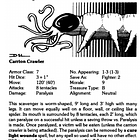
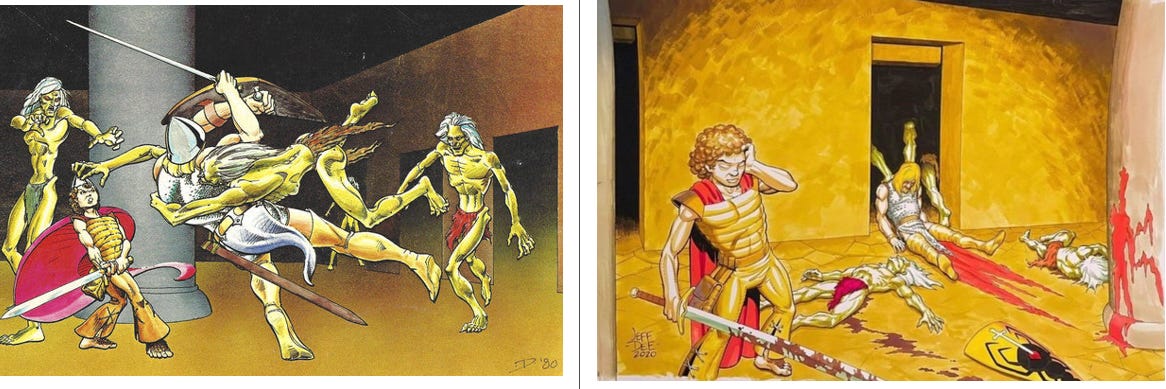
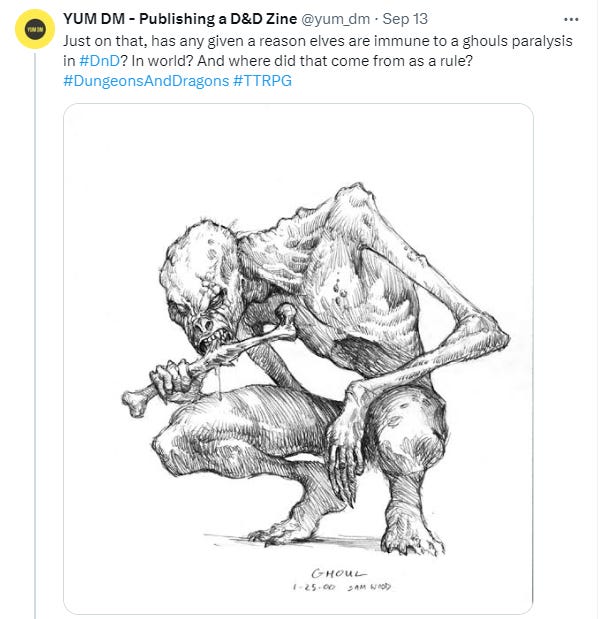
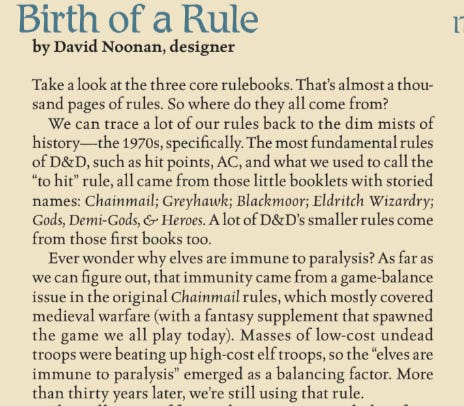
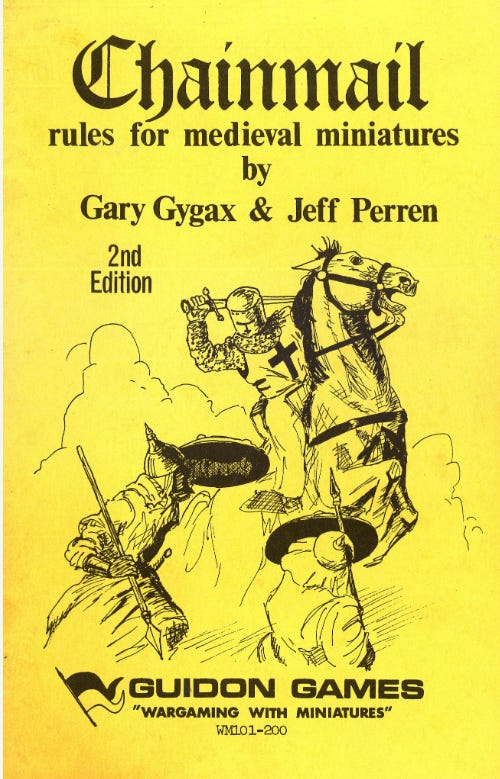
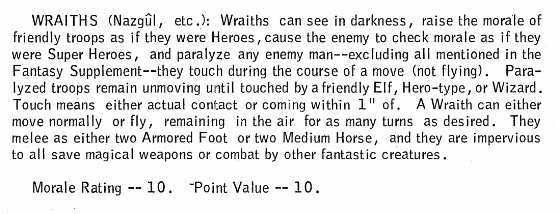
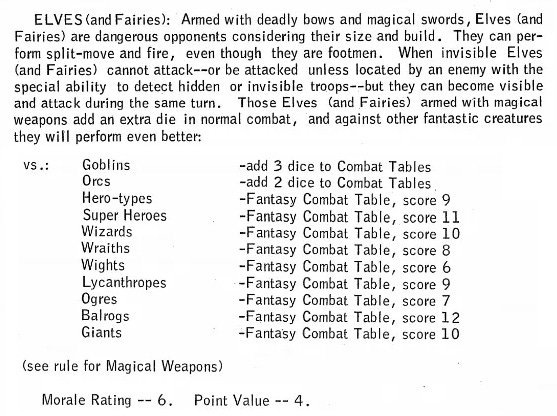

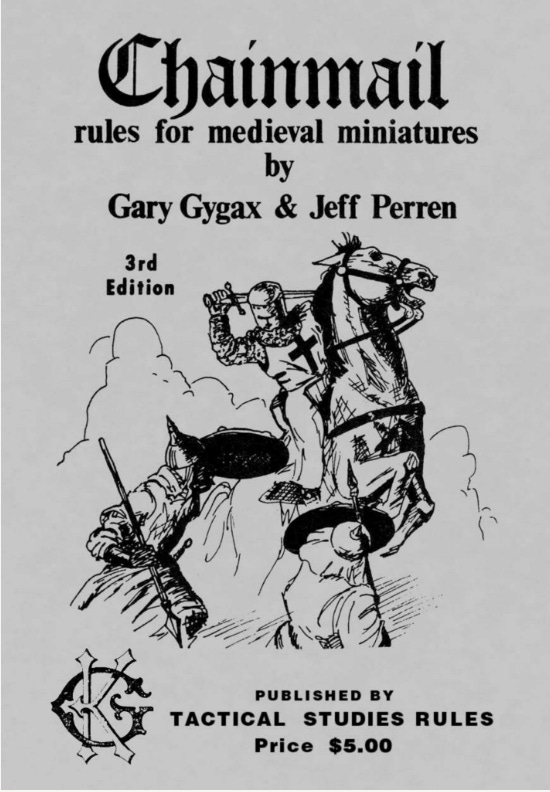
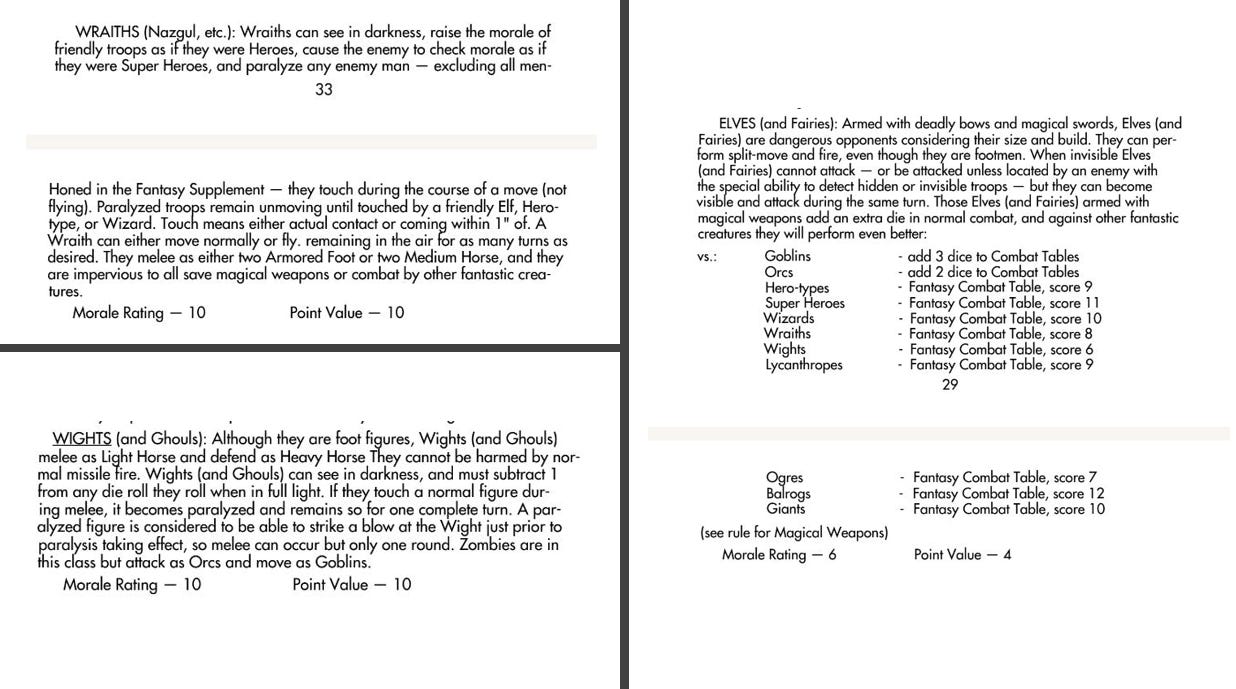
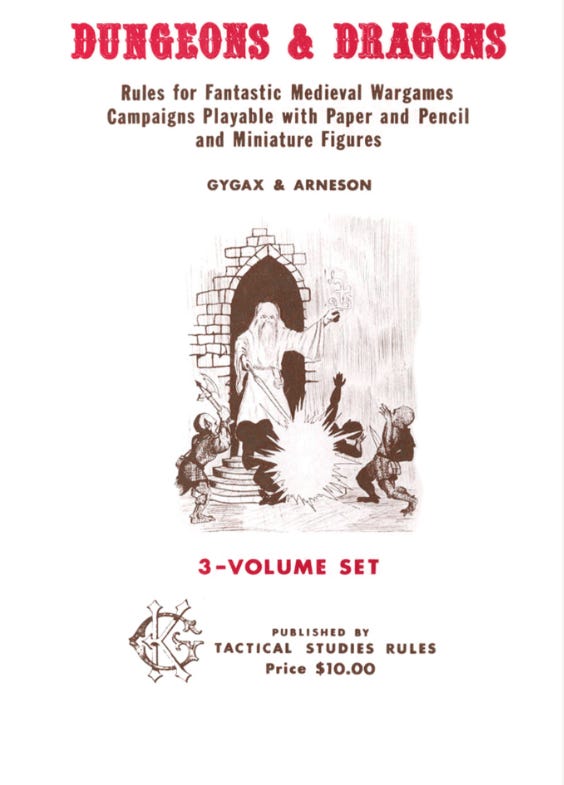
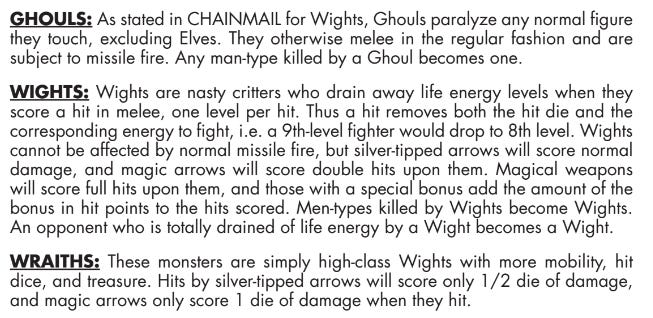
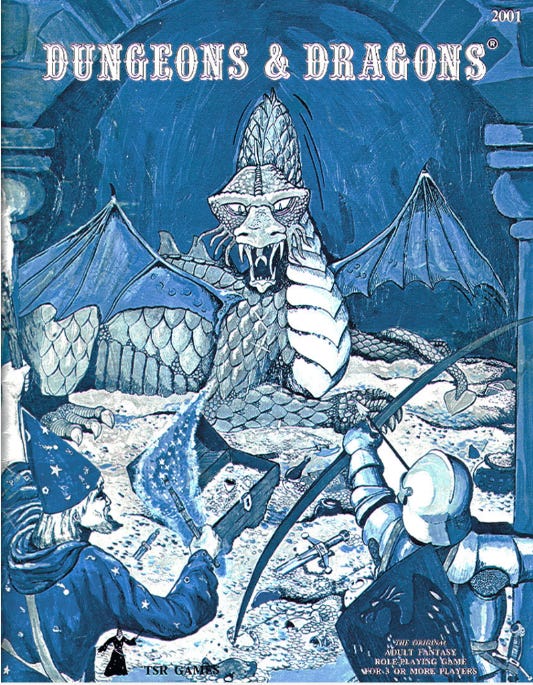
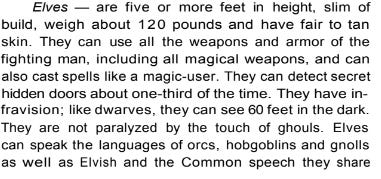

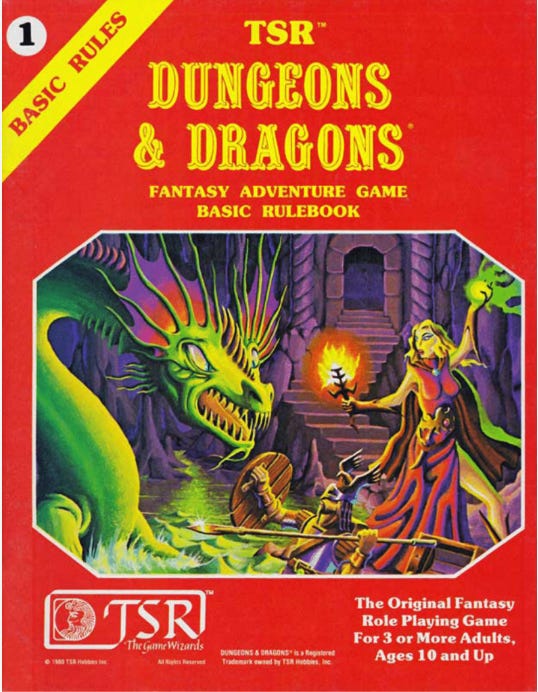
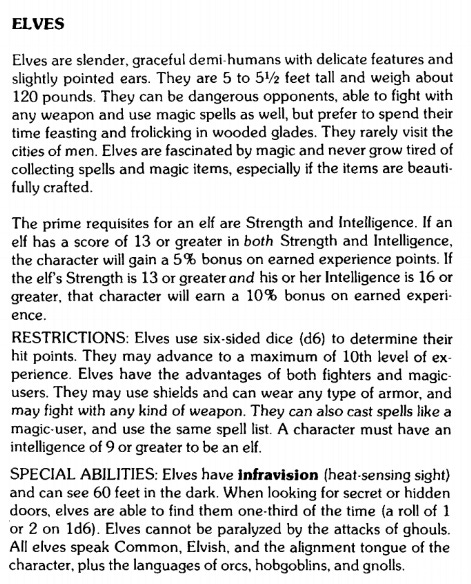
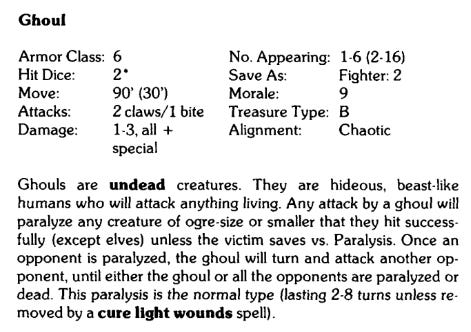
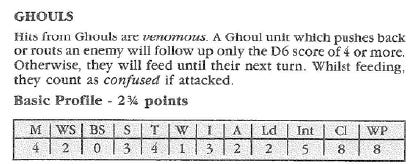


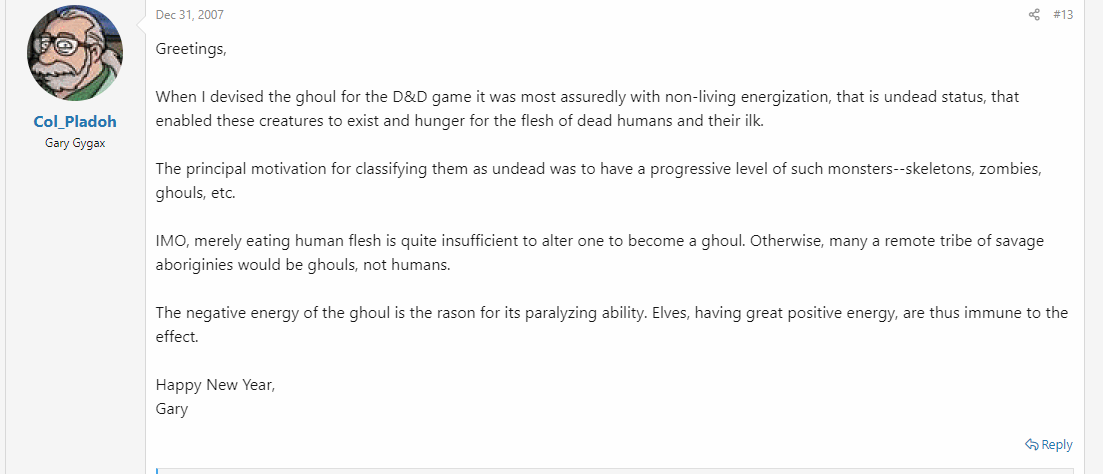
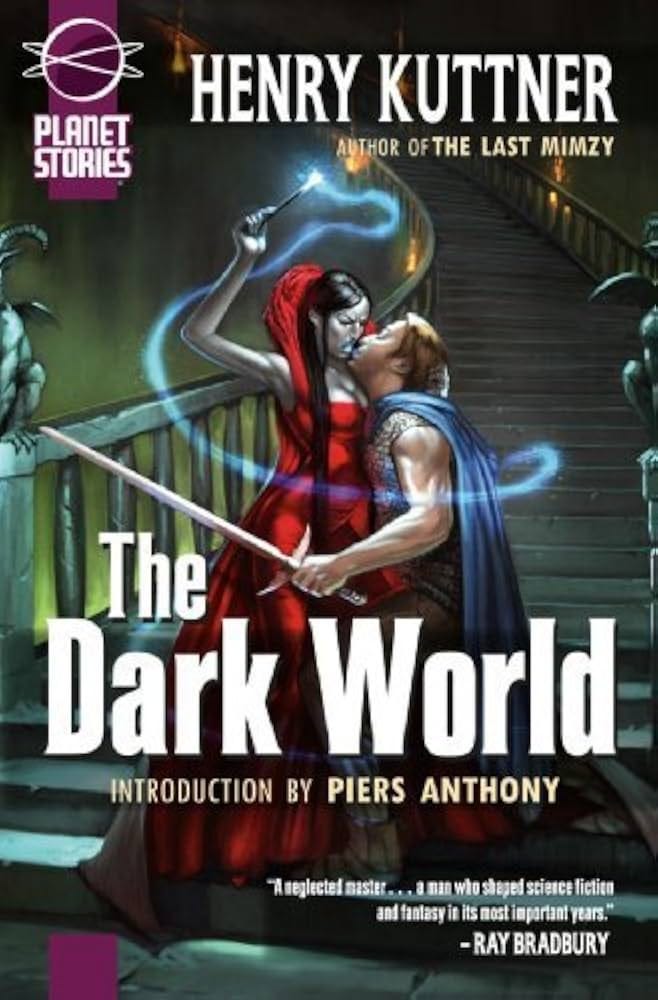

Oh, in researching more about elves and ghouls and appendix N I found this Goodman Games post breaking down sources of all kinds of topics, largey referencing append N sources. <https://goodmangames.com/forums/viewtopic.php?t=42301>
"Ghoul paralysis"- noted.